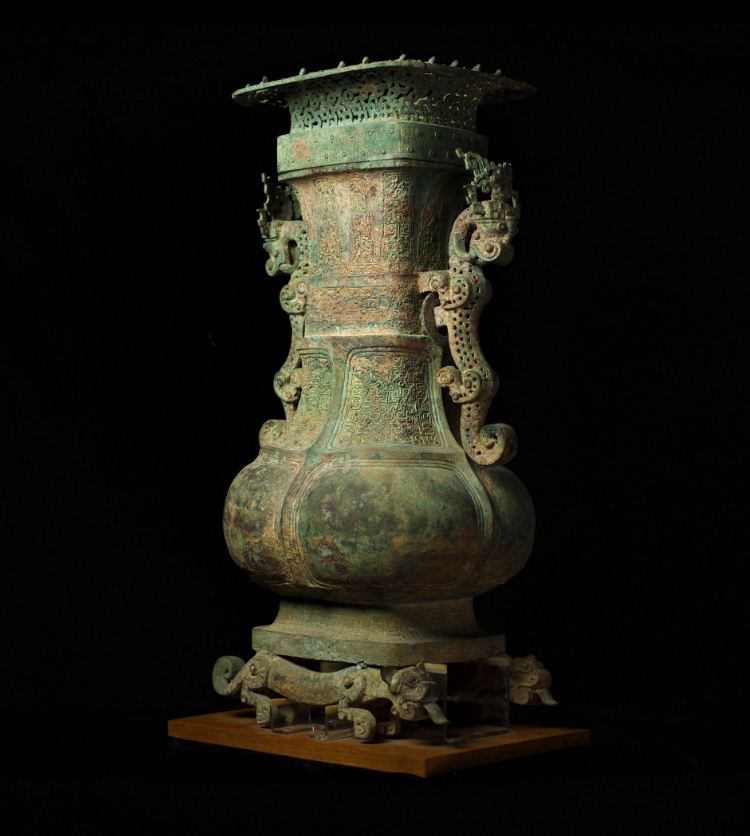The lid of this square hu vessel with coiled dragons is decorated using openwork with a snake motif. The lid was made using lost-wax casting, an advanced casting technique developed during the mid to late Spring and Autumn period which made it possible to create such an exquisite part.
The two handles are formed by dragon figures with four feet. Their heads are turned to look up, giving them a peculiar posture different from the more common eastern dragons that look into their vessels. The body of the vessel is decorated with a rich and complex motif of dragons and clouds. At the base is a pair of tiger figures, crouching in a powerful position and with their tongues hanging out menacingly as they hold up the vessel.
The tomb of Prince Zheng, located in Xinzheng City in Henan Province, was revealed to the world after it was accidentally unearthed in 1923. Dating from the mid to late Spring and Autumn period, the tomb belonged to the royal family of the state of Zheng. The many bronzes that were excavated are of outstanding quality. Not only do they show the metalwork techniques of the early Eastern Zhou period, their gorgeous decorations and imagery also demonstrate the cultural influence of the state of Chu to the south. When these delicate bronzes were unearthed, local warlords and the government agreed to establish an institution for the preservation of antiquities, which would later become the Henan Museum. In 1949, some of the bronzes followed the government and army to Taiwan, where they formed an important foundation of the collection of today's National Museum of History. One representative bronze is this square hu vessel with coiled dragons. Owing to its delicate and solemn shape and historical value, it was listed as a national treasure in 2011.
